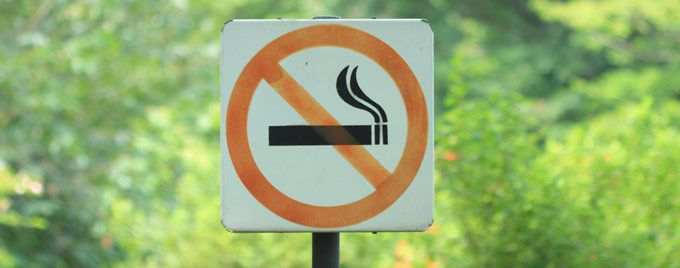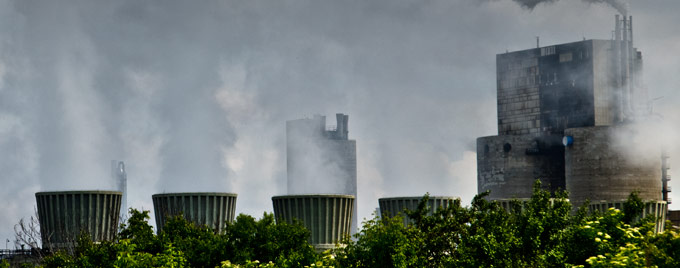Lung cancer prevention: tips to reduce your risk
What is lung cancer?
Cancers start when cells in your body grow uncontrollably. Lung cancer affects the main airway (bronchus), windpipe (trachea) and tissue in the lungs.
You won’t normally notice any symptoms in its early stages. As it progresses, symptoms can include:
- A persistent cough and coughing up blood
- Fatigue
- Frequent chest infections
- Hoarseness of your voice
- Pain in your chest
- Shortness of breath
You may also have unexplained weight loss.
Most cases of lung cancer fall into two categories. Around one in five cases are small cell lung cancers (SCLC). This type is usually caused by smoking and spreads quickly.
About four in five lung cancer cases are non-small cell lung cancer (NSCLC). There are three main types of NSCLC: adenocarcinoma, squamous cell carcinoma and large cell carcinoma. They all share similarities in the way they behave and how they are treated.

Diagnosing lung cancer
Your GP will talk through your symptoms with you and may advise a chest X-ray, breathing test, blood test or collection of a phlegm sample to rule out a chest infection or other conditions that have similar symptoms.
An X-ray can show whether you have any abnormal shadowing on your lungs. If this is the case, you’ll be referred to a specialist who can carry out more in-depth tests, including a CT scan or a biopsy, where a small sample of tissue is taken for analysis in a laboratory.
Lung cancer risk factors
There are a number of factors that increase your likelihood of getting lung cancer. Family history and age play a role, but the most significant factors are external and can be avoided. These include smoking tobacco and exposure to certain airborne substances and radon gas.
Smoking and lung cancer
Tobacco smoke has more than 60 carcinogenic (cancer-causing) substances in it and it’s by far the biggest cause of lung cancer.
Nine out of 10 people who get lung cancer are either smokers or former smokers. It’s rare for somebody who has never smoked to get lung cancer, particularly SCLC. The more you smoke and the longer you’ve been a smoker, the greater your risk. Starting smoking at a young age also increases your risk.
Choosing different types of cigarettes won’t reduce your risk. Low tar or light cigarettes are just as harmful, and menthol cigarettes can increase your risk because they encourage you to inhale deeply. Cigar and pipe-smoking carry almost as big a risk as standard cigarette smoking.
Stopping smoking is the best thing you can do to reduce your risk of getting lung cancer. After stopping, your risk gradually drops over time. After 12 years, you’re 70% less likely to get lung cancer than a smoker. After 15 years, your risk will be about the same as a non-smoker.
Second-hand smoke
Even if you don’t smoke, other people’s smoke can increase your risk of getting lung cancer. This is because second-hand smoke still contains carcinogens. Smoking in public places is banned in the UK and in many other countries, so your chances of being exposed to second-hand smoke are much lower than they used to be. Nonetheless, you should discourage people from smoking in your car or in your home.
Quitting smoking
If you’re a smoker, quitting is one of the best decisions you can make for your health.
Your GP can give you expert advice on how to quit and the services available to you. Some useful tips to help you include:
- Avoiding triggers that you associate with smoking, such as going to the pub or having certain drinks or foods
- Building a support network around you, and if possible, quitting alongside a friend
- Exercising to help manage cravings
- Having a strategy in place for situations when you’re likely to get tempted
- Reminding yourself regularly why you’re doing it and the health benefits you’ll enjoy as a result
Quitting smoking will also reduce your risk of developing a host of other diseases, including other cancers and heart disease. Your sense of taste and smell will improve, you’ll have more energy and you won’t get out of breath as easily.

Radon exposure
Radon is a natural gas that comes from soil and rocks. It’s radioactive and is the result of uranium breaking down in the earth’s surface. There are small amounts of it in the outside air, but if it gets into buildings its concentration can increase. The radon levels vary from area to area — maps are available online that show the level where you live.
Breathing in significant amounts of radon can increase your risk of lung cancer because it exposes you to small amounts of radiation. However, it is a relatively small risk factor. In the UK, radon gas exposure is linked to 4% of lung cancer cases, though most of these also involve smoking.
If you’re concerned about the levels of radon in your home, you can buy a home-testing kit.
Airborne substances in the workplace
Some airborne substances can increase your chances of getting lung cancer and they’re often associated with workplaces. Three of the most common culprits are silica, asbestos and diesel fumes.
Exposure to silica can cause a condition called silicosis, which is a risk factor in lung cancer. Silica is used in construction and some material manufacturing industries.
Asbestos was widely used in the 1960s in the construction industry and although its use was banned in the UK in 1999, it’s still present in some buildings. Breathing in dust created when asbestos is disturbed is known to increase your chances of getting lung cancer. If you’re a smoker, the risk from asbestos is increased further.
Breathing in diesel exhaust fumes also increases your chances of getting lung cancer, putting people who drive for a living and mechanics at greater risk.
Air pollution
In the UK, just under one in 10 cases of lung cancer is linked to outdoor air pollution. It’s a relatively small risk factor when compared to smoking.
Outdoor air pollution is low in the UK compared to some other countries, though levels are higher in urban areas and can rise and fall as a result of changes in the weather.

Lifestyle
Aside from quitting smoking and limiting or eliminating your exposure to other risk factors, what else can you do to reduce your chances of getting lung cancer?
Eat a healthy diet
The quality of your diet can affect many aspects of your health. Research indicates that a diet high in fibre, low in fat and rich in fruit and vegetables can lessen your chance of getting various cancers, including lung cancer.
Exercise
Regular exercise can lower your lung cancer risk. Unless your doctor advises otherwise, you should aim for two and a half hours of moderate exercise each week, such as walking, jogging or cycling.
We hope you've found this article useful, however, it cannot be a substitute for a consultation with a specialist
If you're concerned about symptoms you're experiencing or require further information on the subject, talk to a GP or see an expert consultant at your local Spire hospital.
Need help with appointments, quotes or general information?
Enquire onlineView our consultants to find the specialist that's right for you.
Find a specialistWe recommend reading
Related content
Author Information
Cahoot Care Marketing
Niched in the care sector, Cahoot Care Marketing offers a full range of marketing services for care businesses including: SEO, social media, websites and video marketing, specialising in copywriting and content marketing.
Over the last five years Cahoot Care Marketing has built an experienced team of writers and editors, with broad and deep expertise on a range of care topics. They provide a responsive, efficient and comprehensive service, ensuring content is on brand and in line with relevant medical guidelines.
Their writers and editors include care sector workers, healthcare copywriting specialists and NHS trainers, who thoroughly research all topics using reputable sources including the NHS, NICE, relevant Royal Colleges and medical associations.
The Spire Content Hub project was managed by:
Lux Fatimathas, Editor and Project Manager
Lux has a BSc(Hons) in Neuroscience from UCL, a PhD in Cellular and Molecular Biology from the UCL Institute of Ophthalmology and experience as a postdoctoral researcher in developmental biology. She has a clear and extensive understanding of the biological and medical sciences. Having worked in scientific publishing for BioMed Central and as a writer for the UK’s Medical Research Council and the National University of Singapore, she is able to clearly communicate complex concepts.
Catriona Shaw, Lead Editor
Catriona has an English degree from the University of Southampton and more than 12 years’ experience copy editing across a range of complex topics. She works with a diverse team of writers to create clear and compelling copy to educate and inform.
Alfie Jones, Director — Cahoot Care Marketing
Alfie has a creative writing degree from UCF and initially worked as a carer before supporting his family’s care training business with copywriting and general marketing. He has worked in content marketing and the care sector for over 10 years and overseen a diverse range of care content projects, building a strong team of specialist writers and marketing creatives after founding Cahoot in 2016.
